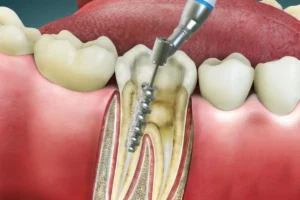Toothbrushes are among the most critical tools in our personal hygiene arsenal. But no one thinks much about how long they’ve had theirs. Curious about when to replace toothbrush essentials such as yours? You’re not alone.
Keeping your smile healthy isn’t all about brushing twice daily—it’s also about toothbrush hygiene. Wearing out a toothbrush decreases cleaning effectiveness but might also welcome bacteria, cause bad breath, and even harm your gums.
Here are all oral care habits to general hygiene, when and why to replace your old toothbrush with a fresh one.
Why Replacing Your Toothbrush Matters
Your toothbrush works hard. Over time, the bristles wear out and lose their ability to clean your teeth properly. When that happens, plaque buildup can increase, leading to cavities, gum disease, and other oral problems.
From oral care habits to general hygiene, using an old toothbrush compromises your dental health in more ways than one:
- Frayed bristles can scratch your enamel and irritate your gums.
- A damp brush can become a breeding ground for bacteria and mold.
- A contaminated toothbrush may reintroduce viruses and infections into your system.
That’s why understanding when to replace toothbrush tools is key to keeping your smile safe.
How Often Should You Replace Your Toothbrush?
As recommended by the American Dental Association (ADA) and most dentist tips, you need to replace your toothbrush (or electric brush head) every three to four months. There are, however, some circumstances that warrant more frequent replacement.
✔ Every 3 Months – As a Rule of Thumb
Bristles start to bend and lose their shape at this point, rendering them ineffective in reaching and cleaning between your teeth.
✔ After Illness
Did you have a cold, flu, or other oral infection in the last three months? Replace your brush right away to prevent reinfection.
✔ If Bristles Are Worn
Don’t look for a calendar alert. If the bristles are split or bent outward, it’s time to change—no matter how long you’ve had it.
✔ After Exposure to Contaminants
Spilled your brush on a grimy floor or left it open in a travel case with no cap? Better safe than sorry—replace it.
What Happens If You Don’t Replace It?
Failing to replace your toothbrush can lead to:
- Ineffective plaque removal
- Gum irritation and bleeding
- Greater risk of cavities
- Bad breath (halitosis)
- Spread of germs and bacteria
These are simple oral care habits we tend to forget, but they can make a huge difference in our oral health.
Dentist Tips on Toothbrush Hygiene
If you wish to maintain your brush (and mouth) as hygienic as possible, below are some dentist-recommended toothbrush hygiene tips:
Rinse Well
Rinse your toothbrush with running water after each use to clear out leftover toothpaste and debris.
Store Standing Up
Place your brush upright in a holder. Avoid covered containers that harbor bacteria and trap moisture.
Don’t Share
Even within family, sharing toothbrushes transmits bacteria and viruses.
Air Dry
Allow your toothbrush to dry thoroughly between uses. Bacteria love damp conditions.
Use a Cover While Traveling
At home, it’s easiest to air-dry, but when you’re traveling, an open-toothbrush cover will keep the bristles clean from germs.
What Kind of Toothbrush Works Best?
Manual or electric, up to you—as long as you brush properly and replace it often.
Manual Brushes work great if used correctly.
Electric Toothbrushes tend to have timers and greater coverage but need their brush heads replaced every 3 months.
Find soft-bristled toothbrushes with easy-to-hold handles and a head that fits your mouth.
Replacement Toothbrushes for Children
Children may be required to replace toothbrushes more frequently—every 2–3 months or sooner—since they will chew on the bristles or brush too hard.
Encourage good oral care habits from the beginning by monitoring their toothbrush condition and proper brushing technique.
Sustainable Toothbrush Alternatives
Concerned about waste? Choose bamboo toothbrushes or electric toothbrushes with removable heads. There are now many Bangalore brands that provide biodegradable or recyclable alternatives that are both dentist-approved and sustainable.
Last Thoughts: Don’t Wait Too Long
Understanding how and when to replace toothbrush tools is an easy yet effective move toward healthier teeth and gums. Staying current on toothbrush hygiene, heeding dentist tips, and being consistent with oral care habits will mean fewer cavities, cleaner breath, and whiter smiles.
Similarly, just as you wouldn’t use an old towel for months without doing laundry, your toothbrush also needs timely attention and maintenance.
At Ivory Dental World, we teach every one of our patients easy habits such as these which go a long way. Whether you need help developing oral hygiene habits, selecting the most appropriate brush, or getting regular check-ups, we’re with your smile—every step of the way.
Schedule your appointment with Ivory Dental World in Bangalore and incorporate oral care into your lifestyle, not your routine.





